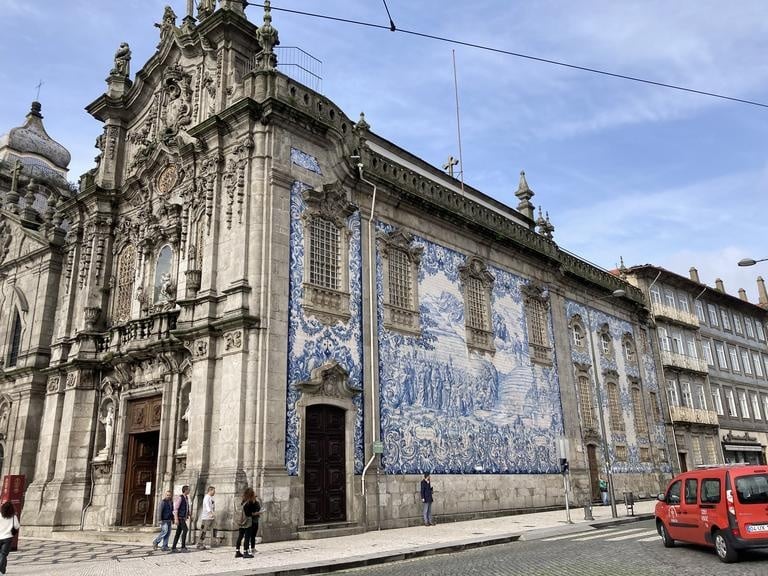
Porto, Portugal’s second largest city, is an amazing place to experience art, history, a vibrant culinary scene and wine tastings. Located in the north of Portugal, along the Duoro River, it is only 3 hours from Lisbon and is at the mouth of the Duoro Valley, one of the most well known wine regions in the world. Porto is a great addition to any Portugal itinerary and here are our recommendations for how to spend two days in Porto.
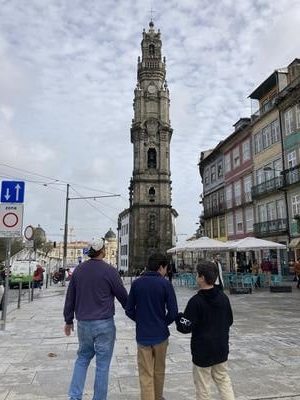
DAY 1
Today is all about experiencing the old world feel of Porto with a walking tour throughout the city. One of the remarkable things about Porto is that even ordinary buildings and houses look extra beautiful because of the Azulejos (Portuguese tiles) that adorn them. As you walk through the city, take note of all of the beautiful buildings around you.
Torre dos Clérigos
The Torre dos Clérigos is one of the most iconic monuments in Porto. The bell tower was built between 1754 and 1763 by Italian architect Nicolau Nasoni. The tower is made of granite and marble and is a spectacular expression of baroque art. Towering 75 meters above the city, it became a beacon for us to find our way through Porto, just as boats once used it to find the port in Ribeira.
For those who are interested, you can purchase tickets to climb the 225 steps to the top of the tower to take in stunning views of Porto, the Douro River and Vila Nova de Gaia in the distance. Tickets can be purchased upon arrival and currently cost 6€ per person.
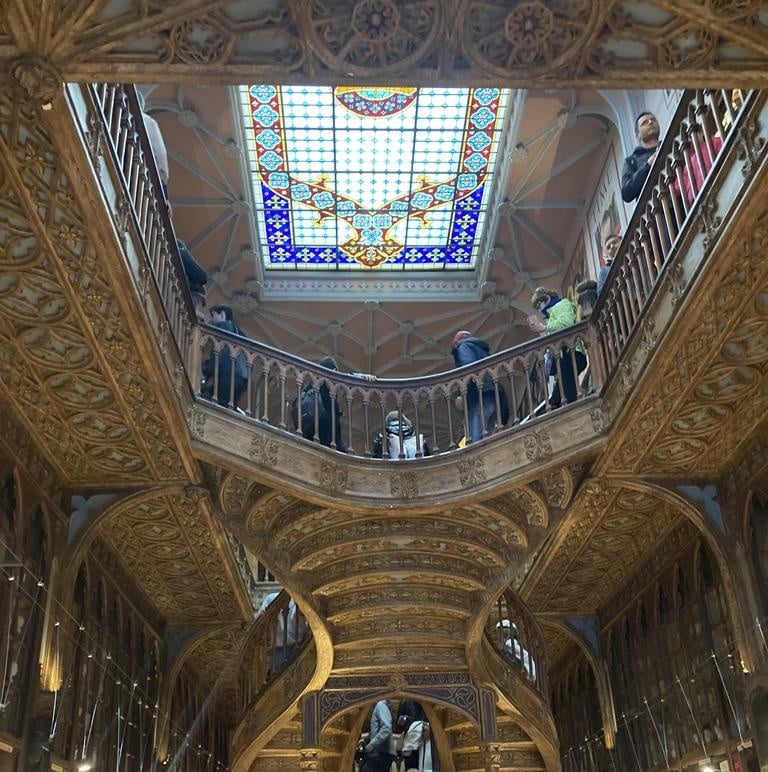
Livraria Lello
With its gorgeous red and gold spiral staircase, Livraria Lello should be on every book lover’s list. This famous bookstore, located just around the corner from the Torre dos Clérigos, regularly has a line running down the street, but when you make it inside, you’ll find it worth the wait. The bookstore is two floors, with wooden carvings, a stained glass ceiling and an diverse collection of books in a variety of languages.
Due to the popularity of the bookstore, tickets are required to go inside. When we visited, there were two lines outside – one for those who had pre-purchased their tickets and a second for those of us who wanted to buy them at the door. There are three different ticket options, with the cheapest one being 8€ per person. The ticket will get you inside and is a voucher for 8€ off the purchase of a book while you are there. We didn’t have any trouble finding books we were interested in that were available in English. In fact, we were able to complete our Harry Potter collection while we were there and we also got a gorgeous book on the history of Azulejos.
If your schedule is flexible, you may want to wait and visit the Livraria Lello later in the day when crowds thin out, but based on its popularity, that may be more difficult than it seems!
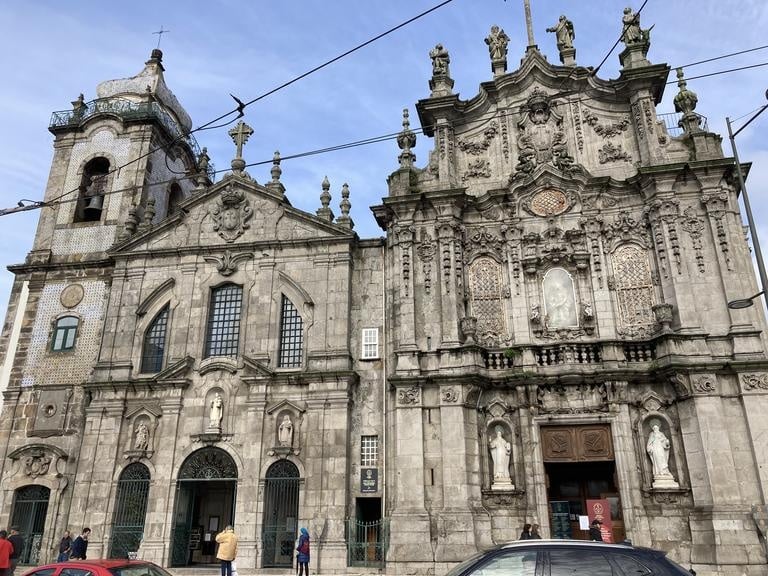
Igreja do Carmo
Just a little past the bookstore is Igreja do Carmo, a church built in 1768 with blue and white azulejo tiles adorning one side and gorgeous ornate baroque style decorations on the front. Igreja de Carmo and its sister church Igreja dos Carmelitas, built more than a century earlier, appear to be one huge block-long structure, but don’t miss Casa Escondido, the 1.5 meter house built between the two churches as you take in this amazing architectural scene. The story is that this “hidden house” was built between the two churches to prevent the nuns, who lived in Carmelitas, from getting together with the monks who lived in Carmo.
Praça da Liberdade
Porto’s main square is the Praça da Liberdade. It connects the old town with the more modern part of the city. In the center of the plaza is a 10 meter bronze statue of King Peter IV on horseback from 1862. The King, who was known as the “liberator” is holding the constitution in his hands.
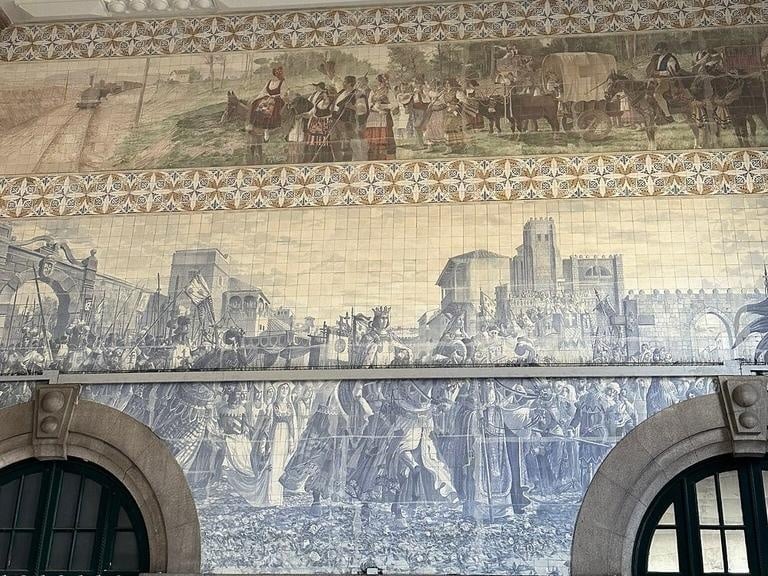
São Bento Station
Just a few meters from here is the São Bento Railway Station. The station opened in 1916 on the site of a former monastery. From the outside you may not think its worth a stop, but inside there are more than 20,000 tiles depicting the history of Portugal. So even if you’re not taking a train while you’re here, a stop in the station is a must!
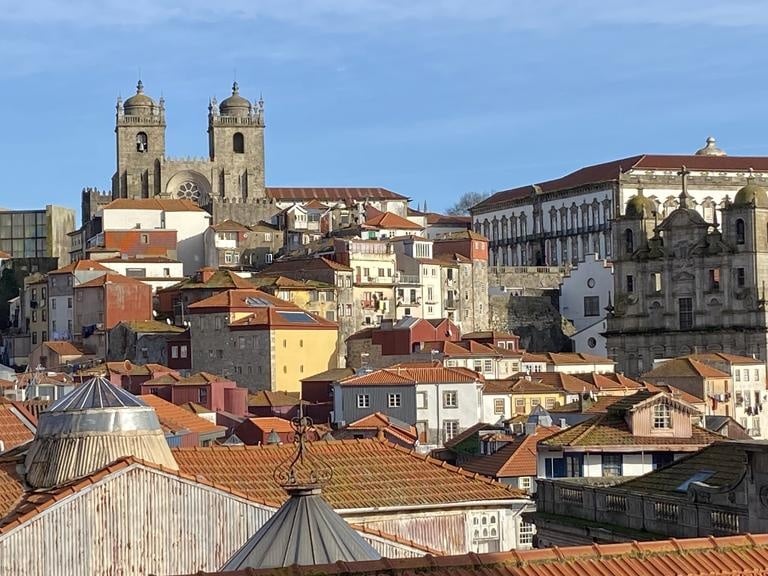
Miradouro da Vitoria
While the spot itself won’t impress you, the panoramic views from the Miradoura da Vitoria are well worth the walk. Look out over the Douro River or back up towards the Old Town and enjoy amazing views in this rarely crowded spot.
Palacio da Bolsa
Located in the heart of this historic centre, the Palacio da Bolsa was built during the Industrial Revolution as a commercial center. The building is beautifully decorated in a neoclassical style and was a symbol of the economic power of Porto in the late 1800s. Thirty-minute guided tours are given in various languages throughout the day, but tickets are not available online and have to be purchased in person for 12€. As a result, some days there are long lines to tour the palace.
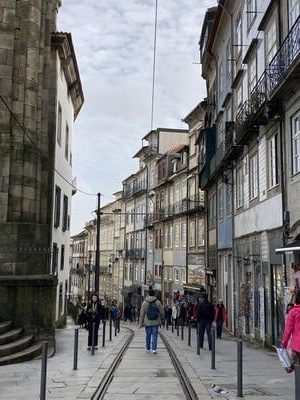
Igreja de Sao Francisco
For those who are interested, just next door is the Church of Sao Francisco. For 10€ per person you can visit the church, museum and the catacombs. The church is the most prominent Gothic monument in Porto. While the outside is rather nondescript, the inside is beautifully decorated with ornate wood carvings and gold throughout.
Cais da Ribeira
Cais da Ribeira is a promenade along the Duoro River and one of the liveliest parts of town. This area is the perfect place to stop for drink or dinner and there are dozens of restaurants to suit everyone’s taste. With amazing views of the Dom Luís I Bridge and Vila Nova de Gaia across the river, this is the perfect place to relax and end your first day in Porto.
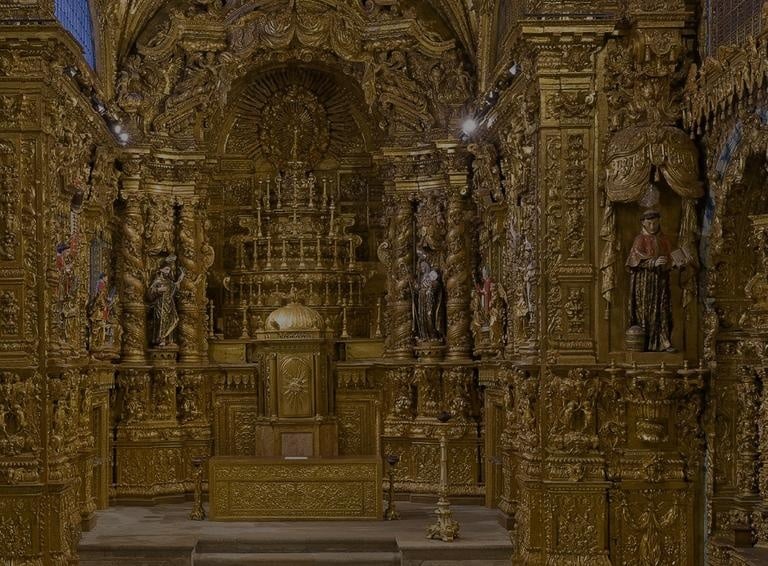
DAY 2
We chose to spend most of our second day across the river in Vila Nova de Gaia – the home of Port wine. Since we stayed in the heart of Porto, we opted to save one church to visit in the morning on our way down to the river.
Igreja de Santa Clara
Built in 1416, the Igreja de Santa Clara is a UNESCO World Heritage Site and once you’re inside you can see why. The building is fairly plain on the outside like Igreja de Sao Francisco, but inside it is decorated in an opulent Gothic style. Tickets can be purchased at the door for 4€ per person and children under 10 are free.
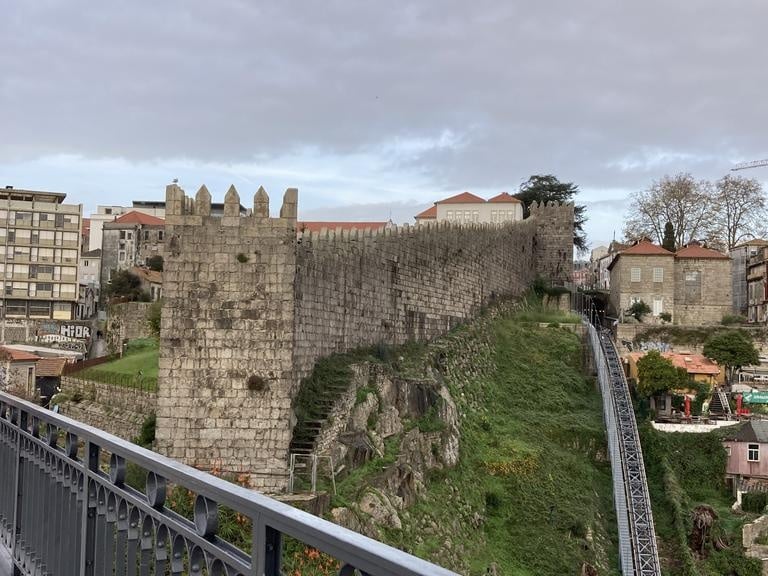
Muralha Fernandina
In the late 1300s, the city of Porto had outgrown the city walls that were located near the Cathedral and so King Dom Fernando commissions the building of new defensive walls for the city. With over 2500 meters of 10 meter hall walls topped with bastions and strengthened by turrets and watchtowers, the Muralha Fernandina protected the city throughout the 1400s. Today, part of the walls remain and can be best seen as you walk towards the Dom Luís I Bridge.
Ponte de Dom Luís I
The Dom Luis I Bridge is a double deck metal arch bridge that spans the Douro River between Porto and Vila Nova de Gaia. Built in 1881, the bridge was the longest of its type in the world at 172 meters. Today, the bridge’s lower level is only for cars and a Porto Metro train takes passengers across on the top level. Pedestrians can also easily walk across the top level. It’s 60 meters above the river, which is pretty high, but because there are large sidewalks even with my fear of heights I was able to make it across with no problem.
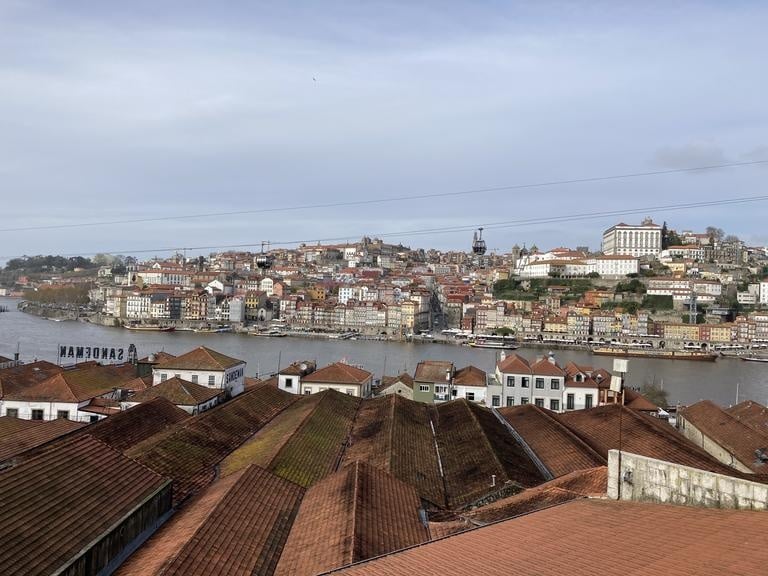
Teleferico de Gaia
For amazing views of Porto, consider a ride of the Teleferico de Gaia. For 10€ per person for round trip or 7€ per person for one way, you can ridge alongside the Duoro River getting a bird’s eye view of Porto and Vila Nova de Gaia as well as the Dom Luis I Bridge. Children 5-12 are half price and there is a family ticket for two adults and two children for just 22.50€. It takes about 5 minutes to ride from the Jardim do Morro station, which is just on the other side of the bridge to the Cais de Gaia station.
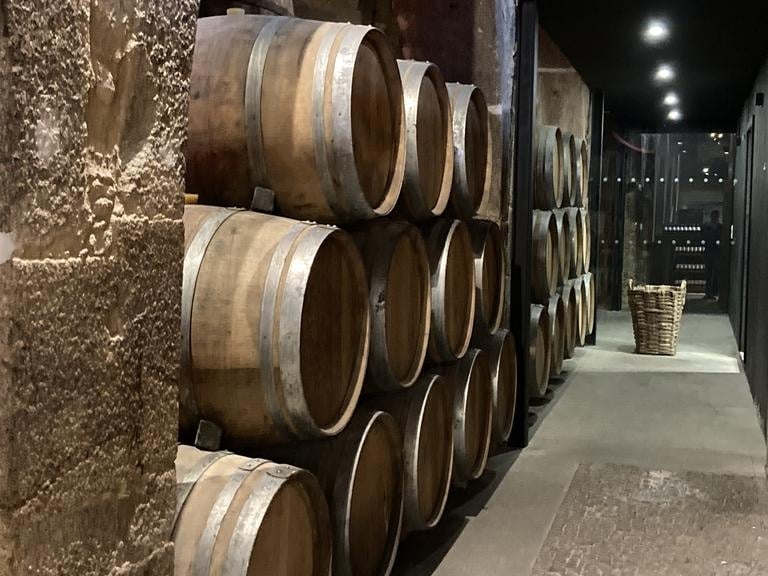
Port Tour and Tasting
All along the Duoro River in Vila Nova de Gaia, there are port wine companies offering tastings and tours of their facilities. You can walk in to most and ask for their schedule that day and jump in on whatever they have coming up. We chose to do a tasting at Calem Caves and we were not disappointed. With so many different choices it was the perfect place to relax and enjoy a wine tasting.
If you have extra time, I would recommend a visit to the Duoro Valley. The landscape is beautiful and there are wineries throughout. We didn’t have enough time since we visited Lisbon and the Portuguese island of Madeira before we went to Porto.
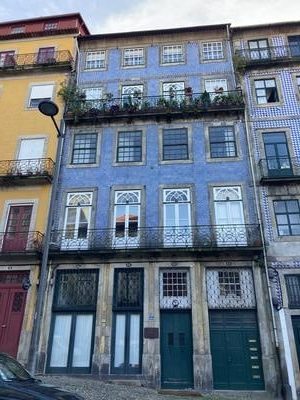
Porto is a great mix of art, history, architecture and amazing food and wine. With two days in Porto you can easily see everything and have time to relax both at the Cais de Ribiera and across the river tasting port wine.
What are your favorite things to do in Porto?


